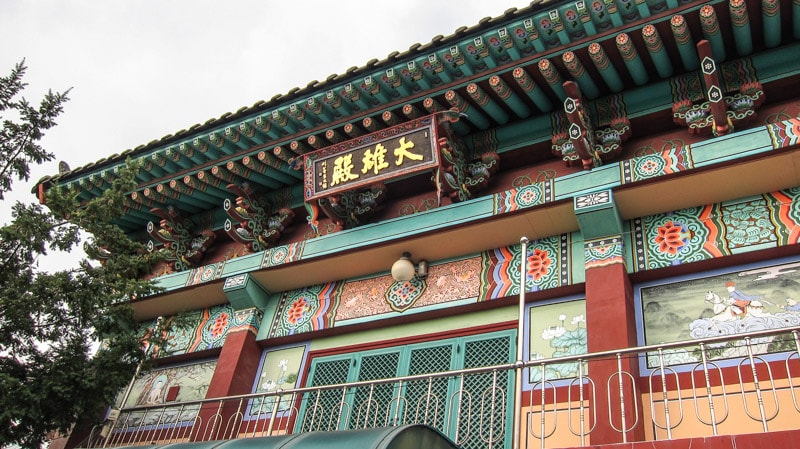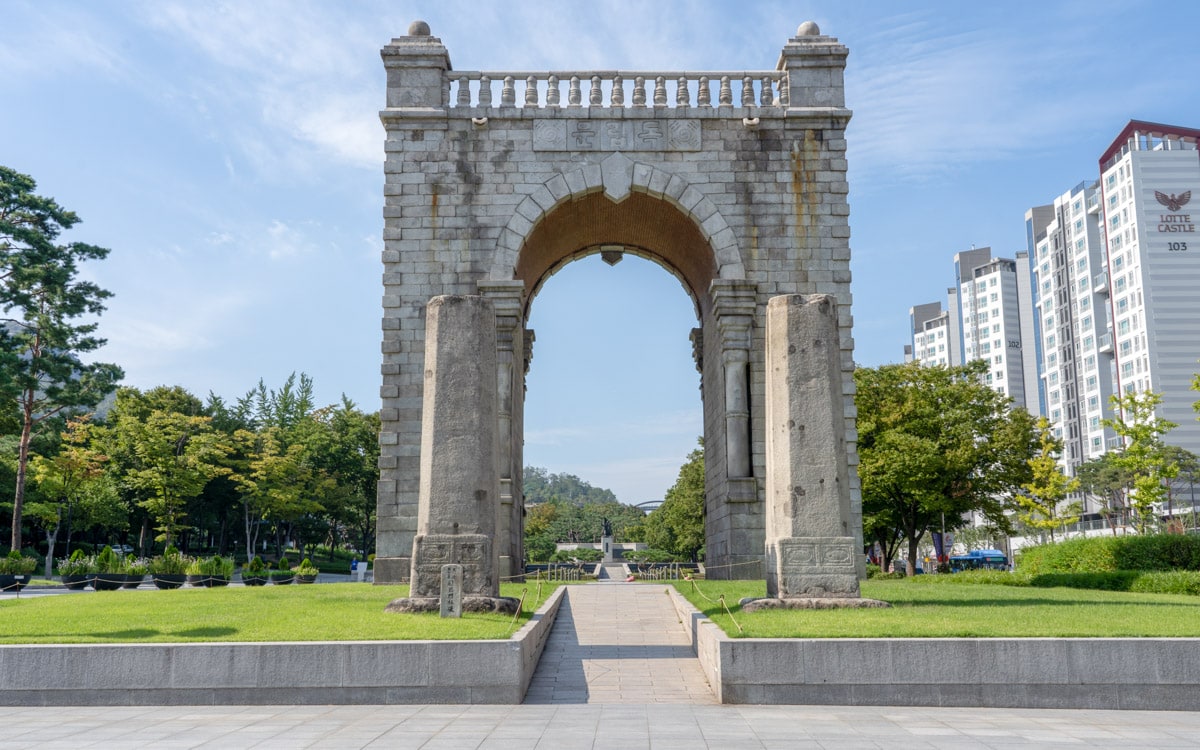
Dongnimmun Gate (Independence Gate) is a memorial built to honor the Korean people and their fight for national independence over foreign intervention. The gate is located in the southeastern corner of Seodaemun Independence Park near Seodaemun Prison History Hall.
A gate known as Yeongeunmun once stood at this location. It was here where Chinese and other foreign envoys were received and greeted. Envoys received their tribute from Joseon monarchs here as they arrived in Korea.
During the late 1800s, Joseon politics were in a midst of disarray. A movement known as the Gabo Reform, which took place from 1894 to 1896, aimed to reform the government through sweeping internal and systematic changes.
Due to foreign intervention, the reform was unsuccessful causing Korea to fail at gaining national independence.
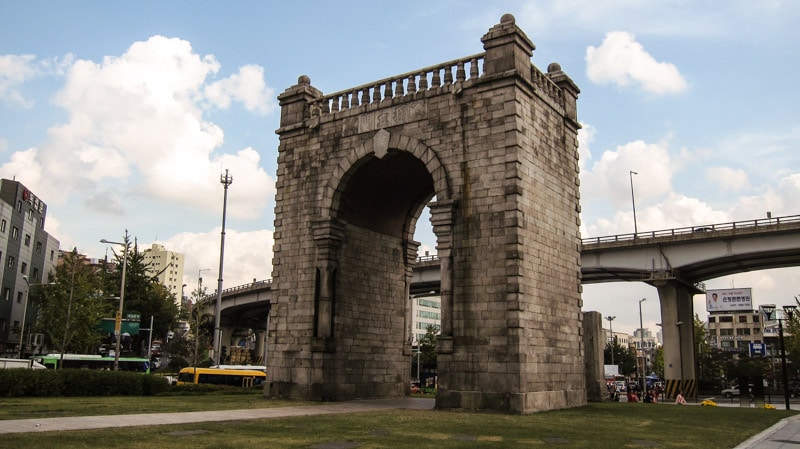
A new symbolic monument and gate was desired at this location after the Qing Dynasty Chinese army defeated the Meiji Japanese army after the First Sino-Japanese War from 1894 to 1895.
On November 21, 1896, construction on Dongnimmun began. The gate was built to symbolize the continued determination of a free Korea without foreign interference. Construction on the gate was completed on November 20, 1897.
The design was created by architect Sim Uiseok with approval of the king and a group of activists from the Independence Club, formed and led by Seo Jaepil. The design was modeled after the Arc de Triomphe in Paris, France.
In response to Korea’s independence, King Gojong proclaimed himself the first emperor of Korea in 1897.
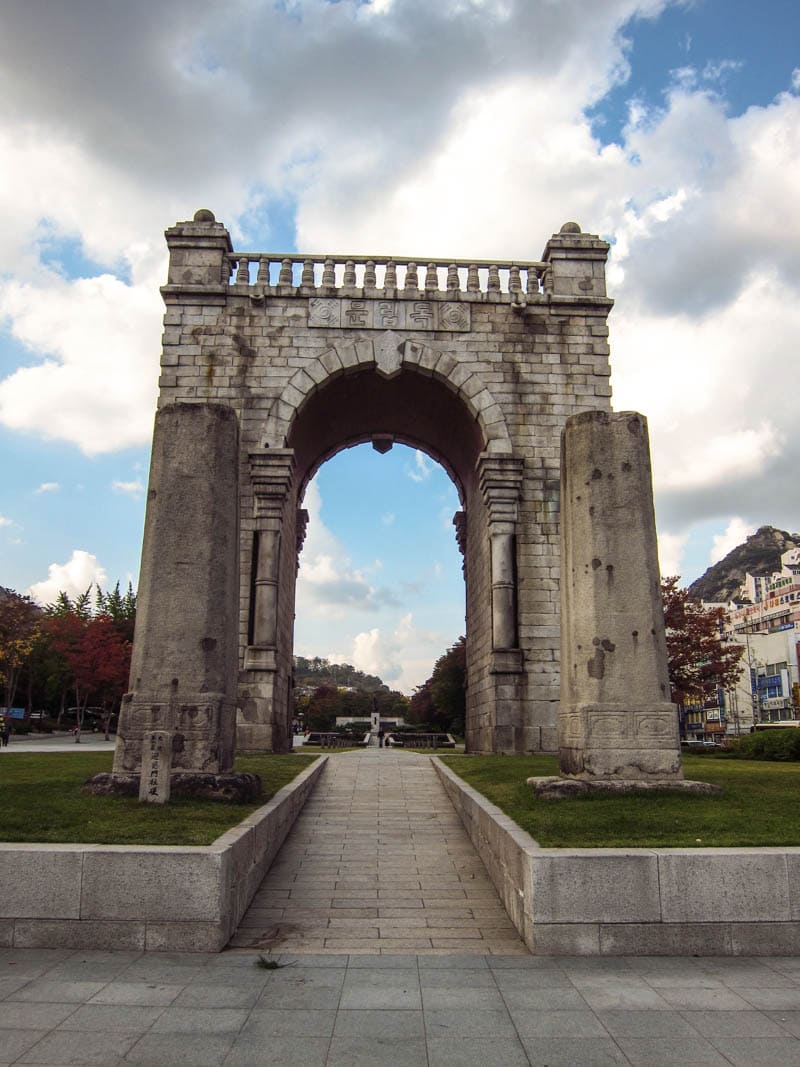
Made of granite, the gate features a large rainbow shaped passageway. The gate stands 14.28 meters (46 feet) high and 11.48 meters (37 feet) wide. A stone staircase on the left side of the gate leads up to the top. A plaque over the arch features plum blossoms which was a symbol of the Great Han Empire.
Dongnimmun Gate (Independence Gate) was originally located 70 meters (229 feet) to the southeast. In 1979, the gate was restored and moved to its current location.
Dongnimmun Gate (Independence Gate) Information
Hours
24 hours
Admission
Free
How to Get Here
Take Subway Line 3 to Dongnimmun Station (Exit 4).After exiting, continue for 270 meters.
Map
Nearby Sights
Seodaemun Prison History Hall
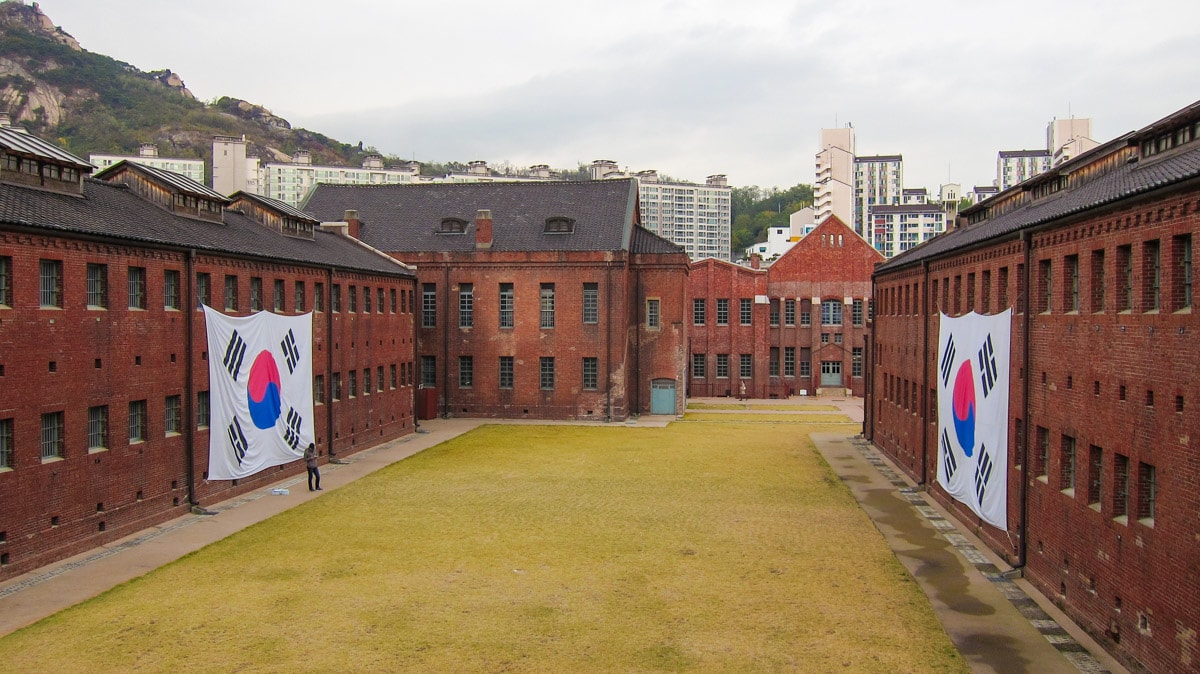
The Seodaemun Prison History Hall is a museum and memorial that honors those who suffered and gave up their lives for Korea during the Japanese occupation. The institution was used by the Japanese to house independence and pro-democracy activists. It also represents the suffering of the Korean people as they struggled to archive independence and democracy.
Yeongcheon Market
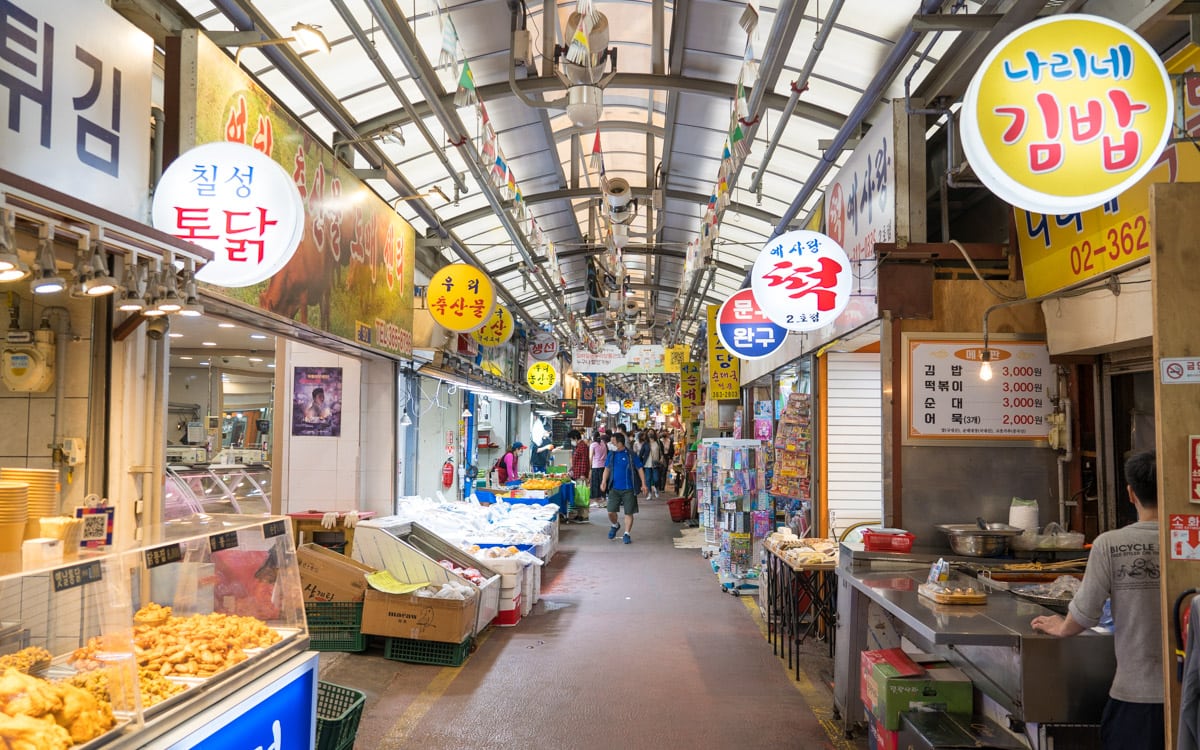
Yeongcheon Market is a small traditional market located between Seodaemun Station and Dongnimmun Station in Seodaemun-gu. This single alley covered market with about 130 stores, established in the 1960s, is popular for its street foods, fresh produce, fruits, meats, seafood, toys, shoes, and more.
Guksadang Shrine
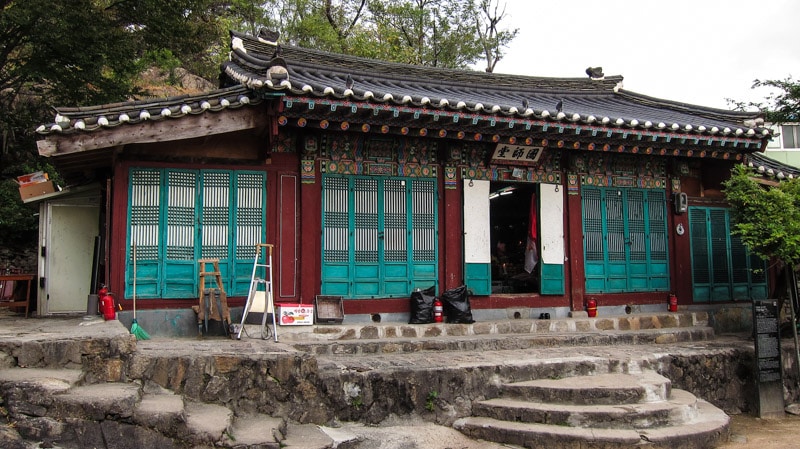
Guksadang Shrine, on Mt. Inwangsan, is one of the most important and almost mythical Shamanic shrines in Korea that at a time was used for exorcisms. Shamanism is a religion with beliefs in unseen worlds of gods, demons, and spirits. Shamans believe in 12 deities which are the spirit of the mountain, the spirit of the dragon king, the spirit of three monks, and spirit of seven stars.
Gyeonghuigung Palace
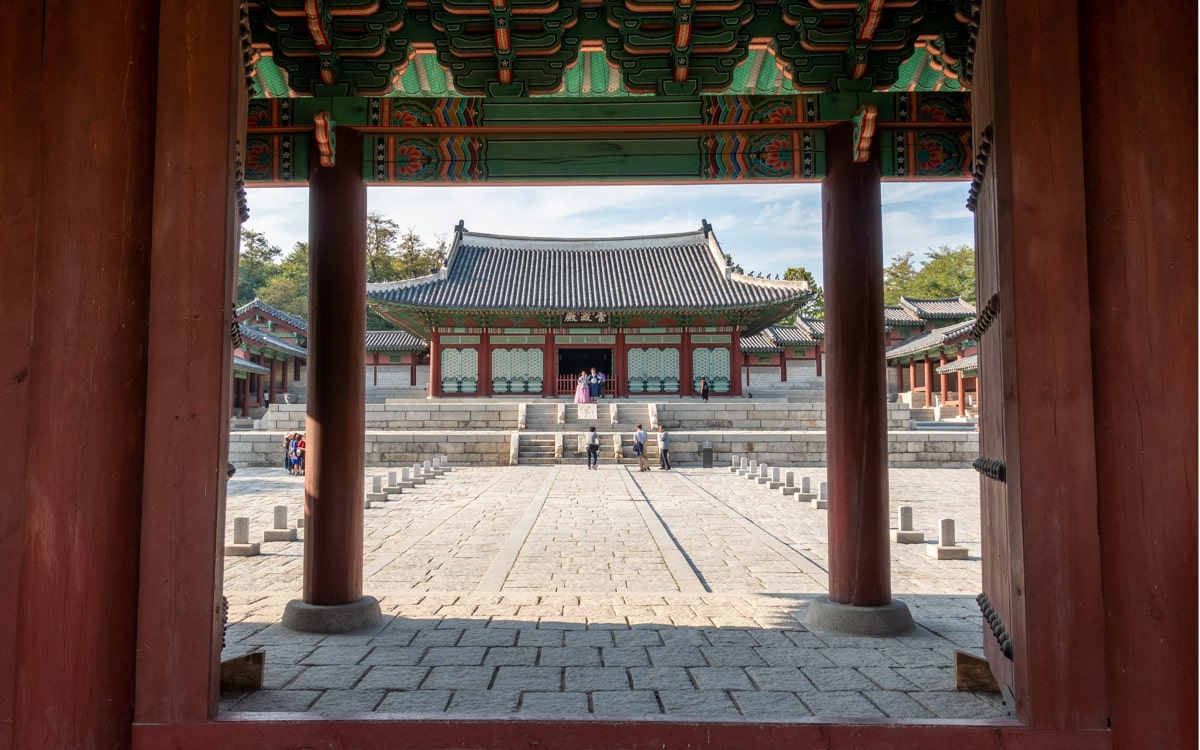
Gyeonghuigung Palace, one of five grand palaces built during the Joseon Dynasty, served as a secondary royal villa for the king during daily excursions. It was also used as a place of shelter during times of emergency. For over 200 years, ten kings resided at this location.
Sajik Park
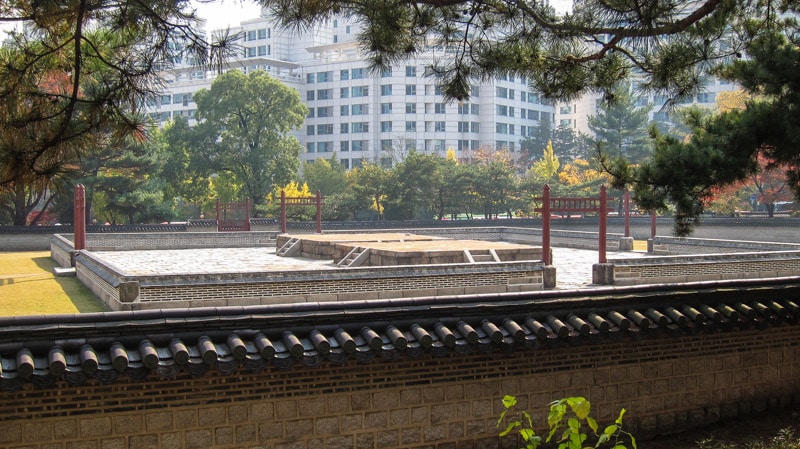
Sajik Park is a park located near the Central Government Complex on the hills of Mt. Inwang. Rites to the deities of earth and grains are performed here. It was here where sacrifices and ceremonies were performed in honor of the deities of the earth and the deities of the grains. These ceremonies and rituals were performed in hopes of a bountiful harvest and included prayers, sacrifices, music, and dance.
Additional Resources
Viator by TripAdvisor
Viator is a popular online platform that helps travelers book tours, activities, and unique experiences worldwide, including in Seoul. It connects users with a wide selection of options – from sightseeing tours to cultural events and outdoor adventures – all offered by local providers.
Book Recommendations
For an immersive guide to Seoul, many travelers choose to bring a book along. Fodor's Seoul, for example, offers detailed recommendations on sights, restaurants, maps, and travel tips.
Learn more about book recommendations
Rakuten
Save money while exploring Seoul with Rakuten's cashback program. Book your hotels or other services through Rakuten and enjoy cashback rewards and exclusive deals.
If you sign up using the link below, you could earn $30 cashback on your first purchase over $30.
Klook
Klook offers discounted tickets and reservations for various attractions and services in Seoul, from theme parks and museums to tours and transportation options.
If you sign up using the link below, you will get $5 off your first order.
Last Updated on Jul 13, 2023
